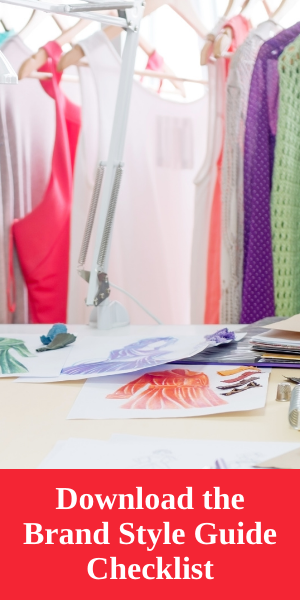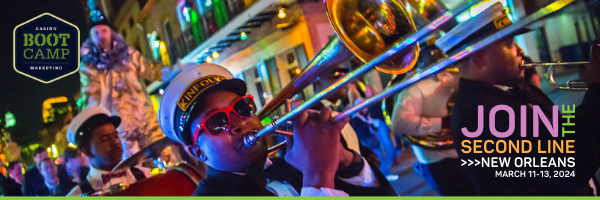Recently we spoke about the five mistakes that can erode your brand. Ensuring consistency wasn’t #1 because although it is relatively easy to ensure brand consistency, it takes attention and work. While differentiation is often the focus in brand development, consistency is also something that must be considered. With enough consistent repetition – whether through marketing communications or experiences – your brand should stick.
What Is Brand Consistency?
When I say, “brand consistency,” I am talking about how you bring the brand emotions to life across all of your channels and touchpoints. It is how you communicate and create experiences that enhance the brand values and strategy rather than detracting from them.
The question of brand consistency is answered by more than just a checklist of a consistent logo and color usage. When you project a consistent brand, it is almost like seeing a family – made up of various elements, all in support of each other, perhaps even looking very similar. (Note: I wish I could say that I came up with the family concept, but I must give credit to the team at Straydog in Vancouver for that beautiful image which I will continue to use.)
This “brand family” has a style that allows target customers to recognize and differentiate it from competitors. Still, more importantly, it is a style that draws them in (hopefully time and time again.)
Marketers are in general agreement that successful brands project consistency across channels and target audiences. Still, while — as consumers — we often only see the brand’s surface manifestations, consistency is more than just about logos, colors, and fonts. Yes, it is about uniform communications, but it is also about tone and manner, both in the written and unwritten (aka experiences).
Why Is Brand Consistency Important?
A consistent brand message and experience can benefit the bottom line in several ways.
- Builds Brand Awareness, Recognition, and Excitement for your brand as guests continue to expand their channels to engage with your brand.
- Builds Brand Trust and Enhances the Guest Experience – We all create expectations the more we are exposed to a brand. When we order something from Amazon, we trust that our experiences will be consistent. Imagine if every order were an inconsistent experience. We must ensure all contact points be consistent to prevent erosion of trust. According to the 2018 Global Consumer Insights Survey, 35% of customers indicate they are likely to buy from a brand based on trust.
- Builds Instant Recognition – It might be the greeting you receive when you walk into your favorite store or the four notes you hear when Intel technology is part of a piece of technology. Consistent, branded moments are instantly recognizable. By the way, did you know some refer to the Intel “bong” as the Mozart of Jingles? A few months ago, we talked about the Avon doorbell in our post on sonic branding. Additionally, according to Lucid Press, consistent application of brand colors can increase recognition by up to 80%!
- Increases Revenue because you can market less. The average revenue increase attributed to brand consistency is 23%. (Source: Lucid Press)
How Many Cooks in The Brand Kitchen?
Whether you are the brand marketer for a small store or a multi-property casino operator, you face the same moment of truth. You create what you believe is the right approach for the brand and all accompanying graphic do’s and don’ts. Then you turn it over for everyone from Human Resources to purchasing to front-line employees interpret the brand for day-to-day applications. However, when multiple people can become the brand’s voice, you leave room for flaws that (depending on the scope) could be detrimental to the brand. Consistency will allow your audiences/guests/customers to build a level of recognition that eventually lowers the number of exposures we have to provide. In other words, as recognition rises, the need for marketing decreases.
While the average person is now estimated to encounter 6,000 to 10,000 ads every day, experiential touchpoints have dropped due to COVID-19. That makes those moments even more critical!
Consider Your Internal Culture.
Brand consistency lives or dies on the inside. After spending time understanding and interpreting the brand voice so that it will ring true with customers, the experience has to match. That requires a certain level of internalization from everyone in the organization. One of your most valuable partnerships will be with human resources and the executive team as the brand leader.
Your logo is not the brand.
Your jingle is not the brand.
Your organizational culture IS the brand.
As marketers, we can get so focused on the awareness that we can forget how vital employee buy-in is to the brand. However, buy-in does not happen in a vacuum but instead mimics our leaders’ behaviors. So, if your leaders are not living the brand promise, how can you expect line employees to do so?
Consider doing the following.
- Develop mindsets and behaviors that will guide employees to create on-brand guest experiences and those that will likewise create on-brand team member experiences.
- Develop materials for each department to understand their roles in fulfilling the brand promise consistently. We previously discussed how important the employee manual is in equipping team members to fulfill the brand promise.
- Create band immersion opportunities in all onboarding and training. More than a distribution of logo items (which is always lovely and appreciated) consider role-playing or other entertaining ways to incorporate the preferred branded behaviors.
- Encourage employees to act as brand ambassadors by providing the type of experiences they WANT to share and providing creative assets.
The goal is for your internal audiences to embrace the brand in such a way that consistent delivery of branded experiences is assured.
We all make mistakes.
Perfection is great, but frankly, a dream, especially if you are the kind of company that has multiple touchpoints. Additionally, humans are interpreting our brands. Think about it.
You can probably recall a moment where a seemingly successful brand threw you for a loop with a brand consistency failure. On a good day, we shrug those moments off, but we could very well be driven to a competitor on a bad day.
Nearly every team member has the opportunity to create branded content. In today’s view, content seems to point to social media, but how that team member greets a guest or ensures the guest has a great time is content. If their interpretation of the brand is inconsistent with the goals, their best intentions could negatively impact the brand.
The key is not to leave your brand open to a variety of interpretations and customizations. Ensure every guest interaction embodies the promise and values. The more consistent your experiences are — whether through words, body language, and operational design — the more you will build trust and loyalty.
Hire for The Brand; Train for Skills.
Hiring the right people is critical for the survival of the company. We’ve all read the reports of how much companies can waste in replacing bad performers. Additionally, these bad performers can also harm the brand through their interactions with guests or other team members; they slowly chip away at the brand.
A crucial piece of the partnership between brand managers and HR is creating standards and behaviors. Because these standards are designed to support the brand, each candidate should be judged by them. Also, understanding the culture and the candidate fit should be an active part of the process.
Only when new hires have a deep understanding of the brand can we hold them accountable for progressing the brand.
Develop Guidelines.
 As brand managers, our jobs are to build awareness and encourage the development of brand loyalty with guests, team members, and stakeholders. Consistency is necessary, but it does not come without a good, solid direction. You must develop standards to encompass graphics (for digital, broadcast, and printed mediums) and operations.
As brand managers, our jobs are to build awareness and encourage the development of brand loyalty with guests, team members, and stakeholders. Consistency is necessary, but it does not come without a good, solid direction. You must develop standards to encompass graphics (for digital, broadcast, and printed mediums) and operations.
Comprehensive brand style guides not only help marketing vendors, but they can also serve as guidance to every department, particularly when you have a creative group of brand ambassadors. It is terrible to see your logo stretched in odd ways, pixelated because someone used a too-small file for the application, or even recolored. Heck, I have seen logos wear sombreros for Cinco de Mayo! It is even worse when that abomination of a logo gets shared and reused. My eyes!
A great way to ensure consistency is to provide easy access to employees and crucial details and FAQs to guide them.
- Work with your IT department to create an easily accessible folder on your company intranet.
- Include examples and swipe files for both online and offline use.
- Create branded email signatures that everyone will be proud to use.
- Develop a set of assets for team member advocates/ambassadors such as cover photos and frames they can use for their posts. Additionally, it would help if you spotlighted the work your ambassadors are doing to encourage more activity.
- Every organization has someone presenting a PowerPoint-type presentation to someone on any given day. Develop a branded theme they can use for both internal and external presentations. And, given the current Zoom environment, consider some backgrounds your team members will love to use.
- Encourage print, and promotional requests are funneled through a single department to ensure proper brand application.
- Most importantly, think less control and more availability. Make yourself available when people need help.
Achieving brand success requires you to take inventory of visual and experiential touchpoints and determine your brand consistency quotient using a simple scorecard where all elements are evaluated and given a score on a scale of 1 to 5.
5 – perfect and needs no improvement
4 – pretty good, but could use some modification that wouldn’t cost too much
3 – good, could use improvement that will take some effort
2 – needs improvement that could be costly in terms of time, money, or effort
1 – should be forbidden from now on because it will never enhance the brand value no matter the change.
You don’t need me to tell you what to do next. Once you complete this audit, the plan will reveal itself to you, and you’ll also have a valuable inventory should you ever need to rebrand or update graphics.
Expand Opportunities for Your Brand.
The best advice I can offer to you is to remain brand aware.
Participating in the platforms and channels preferred by your stakeholders will guide you in any evolution of your brand. As an added benefit, this participation will also keep you from what some of my friends call “marketing squirrel syndrome,” which is when you get distracted by something shiny and new at the cost of your brand’s benefit. It IS essential that you move when your stakeholders do but always do so with careful evaluation.
Ask yourself a few questions whenever some new opportunity arises.
- Will your brand grow or diminish the trust it has already established?
- Do your current stakeholders expect you to be a part of this? Will you be drawing new interest that will turn into revenue for you?
- Would you expect a brand like yours to be participating?
Influencer marketing is growing, and though we do not see the edge of the bubble today, we should start to align our brands with the right influencers. Some marketers have rushed in too quickly and paid dearly. Some marketers are still just dipping their toes into the influencer pool. There are some standard keys to success.
- A natural match between the influencer and your core customers
- Existing conversations the influencer is having are a natural fit with your brand
- The influencer has respect for your brand and will ensure proper usage
Maintaining consistency in your brand is not a simple task because humans are humans. Still, once you have set a structure that can grow with the many changing needs of a brand, you will have the ability to look back and feel satisfied and pride in the brand.
There is nothing better than someone saying, “I love that brand,” and that brand is yours!



Recent Comments